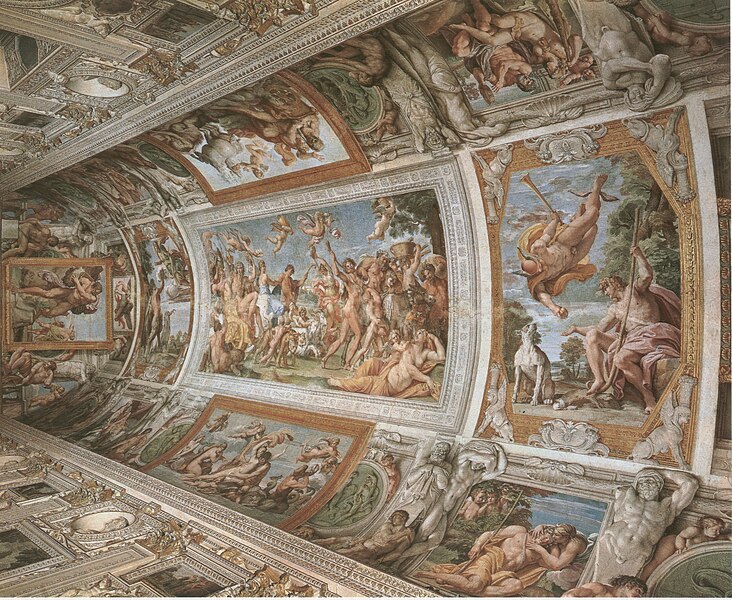
Name: The Loves of the Gods
Artist: Annibale Caracci
Date Painted: 1597 – 1608
Period: Baroque
Medium / Material: Fresco
Current Location: Palazzo Farnese, Rome
Summary
“The Loves of the Gods” by Annibale Carracci is a renowned fresco cycle that adorns the ceiling of the Farnese Gallery (Galleria Farnese) in the Palazzo Farnese, Rome. Created between 1597 and 1608, this masterpiece of the Italian Baroque period is celebrated for its innovative approach to ceiling decoration and its profound influence on later European art.
Background and Commission Annibale Carracci received the commission from Cardinal Odoardo Farnese, a member of the influential Farnese family. The project was ambitious, aiming to rival the grandeur of the Sistine Chapel. Carracci, along with his brother Agostino and a team of assistants, embarked on this monumental task, transforming the gallery into a breathtaking visual narrative of mythological themes centered around love.
Themes and Composition The overarching theme of “The Loves of the Gods” is the amorous adventures and transformations of the gods from classical mythology, illustrating tales from Ovid’s “Metamorphoses” and other sources. The cycle includes scenes such as “Jupiter and Juno,” “The Rape of Europa,” “Diana and Endymion,” and “Apollo and Daphne,” among others. These stories are framed by illusionistic architectural elements and trompe-l’œil effects, creating a dynamic and cohesive composition that envelops the viewer.
Artistic Innovation Annibale Carracci’s approach was revolutionary. He combined the best elements of the High Renaissance with the naturalism and emotional expression of the emerging Baroque style. The frescoes are characterized by their clarity, vibrant colors, harmonious compositions, and the lifelike quality of the figures. Carracci’s use of di sotto in sù (seen from below) perspective and his ability to integrate the paintings with the architectural space were groundbreaking, setting new standards for ceiling decoration.
Impact and Legacy “The Loves of the Gods” had a profound impact on the development of Baroque art, influencing countless artists including Peter Paul Rubens, Giovanni Lanfranco, and Pietro da Cortona. The fresco cycle is regarded as a pinnacle of Baroque ceiling painting, demonstrating Carracci’s mastery of narrative, composition, and technique. Its success cemented Annibale Carracci’s reputation as one of the leading painters of his time, and the Farnese Gallery remains a testament to his artistic vision and the cultural ambitions of the Farnese family.